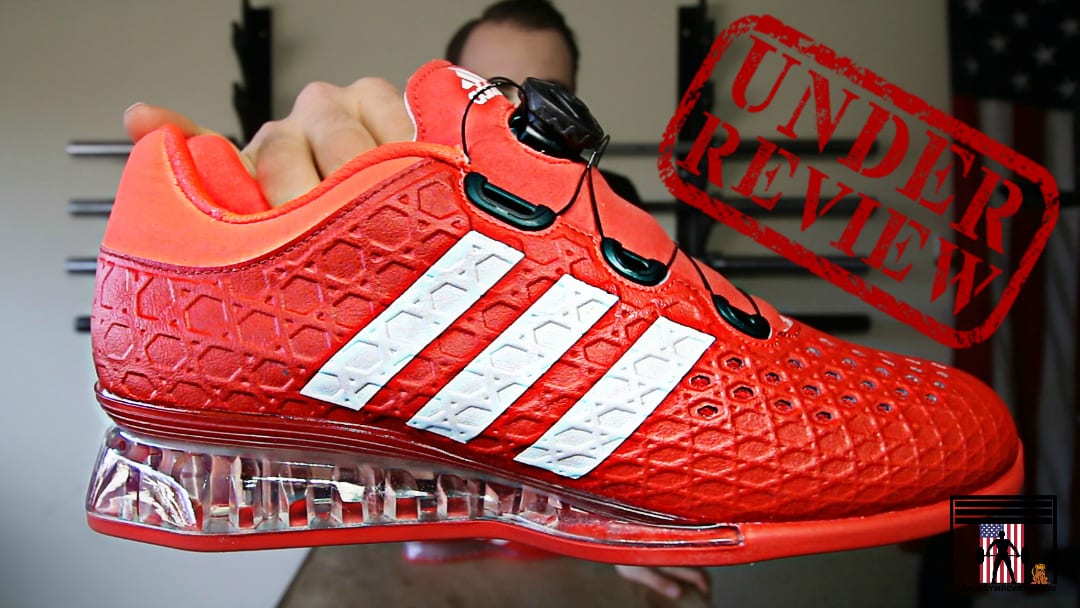When it comes to setting ourselves up for success at the gym, we all tend to have our go-to’s, whether it’s a favorite pre-workout, those latest noise-canceling headphones, or that old pair of gym shorts we just keep coming back to. But one thing I keep seeing people put on the backburner is their shoes.
Look, I get it, when you’re hitting the gym and getting ready to PR, the last thing you’re thinking about is your feet. But here’s the thing, while shoes may not be as sexy to talk about as the latest piece of equipment, wearing the right shoes will not only help you look like you know what you’re doing but they can also help you with injury prevention and performance.
To put it simply, your feet are your foundation, and you need shoes to support them. When it comes to picking the right training shoes, it’s not a one-size-fits-all formula. In this article, I’m going to discuss what to look for in a shoe and the benefits and features of different types of shoes.
What to Consider
There are many different types of training shoes, and they’re all designed for different types of workouts (and you better believe I’ve tried a lot of them). Whether it’s a lifting day, CrossFit day, or you are planning to sprint on the treadmill, it’s really important to choose the right shoes to support your feet and joints so you can achieve your goals in the gym without letting injury get in the way. So let’s dive into some things you should consider before deciding what shoes work best for you depending on what you’re doing in the gym.
General Tips for Gym Shoes
Wear Shoes When Exercising
Some people think barefoot is best, but for the average athlete, proper shoes can help you avoid injuries and provide support and shock absorption while lifting weights and performing functional movements. There’s not a ton of research surrounding the benefits of exercising barefoot, and most of the little that’s out there is focused on running.
Some studies say barefoot running can decrease injuries of the ankle and lower leg, but there’s not enough out there to really back up the idea. Injuries ultimately come down to how you move, and what’s on your feet can influence this. If you’re used to wearing shoes with a supportive heel and arch support, you may do more harm than good if you try to switch to working out barefoot, as it takes a while for your body to adjust and it puts strain on the smaller muscles of the feet and ankles.
Good shoes not only support the ligaments and structures of the foot but also prevent excessive loading through the knees, hips, and back. This can improve your form, decrease pain and prevent injuries. Wearing good shoes is especially important if you have excessive pronation (flat feet) or have high arches. The right shoes can help limit unnecessary motion through the foot and ankle and increase stability and balance.
And to address the elephant in the room, while barefoot lifting is trending and there is some truth to the benefits, it’s not as fun to be barefoot when a dumbbell falls on your foot. Shoes protect your feet and toes from the floor or other objects in the gym, so you don’t accidentally stub your toe between exercises.
Make Sure Your Shoes Fit
When it comes to shoes, a lot of us tend to lean on superficial factors like aesthetics to make a decision. However, while looking like a badass in the gym is a nice touch, an important thing to think about when it comes to picking the right shoes is finding ones that can support your feet.
Wearing shoes that are too tight or too large can not only be uncomfortable, but they can also lead to some pretty serious injuries. You want your shoes to feel snug but not tight and support your feet in all the right ways.
If you have wide or flat feet, the fit is extra important to think about. The same goes for those with high arches—you may need to find a shoe that has more arch support and adjustable closures so the shoe is not crushing the top of your foot, which can lead to your feet going numb. Look for shoes that are designed for high arches or, if your feet are wide, opt for those that offer wide sizes as well.
More support is not always better, depending on the workout, but you definitely don’t want your feet sliding around or having your toes continually bumping up against the front of the shoe. The less friction there is, the lower the chance of getting blisters, sores, or toenail issues, which you definitely don’t want to deal with if you want to work out again the next day.
Shoes for Lifting
Wearing lifters (shoes designed for lifting heavy weights) isn’t going to turn you into a competitive powerlifter overnight, but they will increase stability and have an added cool factor at the gym. Weightlifting and powerlifting shoes can make a difference in hitting your next PR and help prevent injuries when the loads get heavy. These shoes are designed for hitting Olympic lifts–the snatch and the clean and jerk– as well as squat variations. They have a broad base of support, little to no arch or cushion, and have a significant heel lift.
Your typical running or cross-training shoe will have a heel-to-toe drop of something like 5-10mm. A shoe specifically designed for lifting weights will have upward of a 20mm drop. The structure of the shoe–the big heel and solid base–allows for two things to happen: Your knees are able to come forward over the toes in the squat, and you have a hard platform under your foot to increase stability for explosive movements (like the snatch) as well as the compound power movements, like the squat.
A 2017 study showed that weightlifting shoes significantly assist athletes in achieving a better position in loaded and unloaded squats. This happens because the raised heel takes the strain off the ankle, which allows the knees to come over the toes in the squat, which leads to a more upright torso.
Weightlifting shoes come in various styles and colors, so there’s no shortage of options out there. Personally, I really like the NoBull lifter weightlifting shoes for their sleek style or the Nike Romaleos for their trendy exterior and great features.
RELATED: Best Weightlifting Shoes
- They have little to no arch: When it comes to lifters, the less arch on the shoe the better. Shoes with no arch let your feet have maximum contact with the ground and will give you a better grip which allows you to actually feel the floor through your feet.
- They have little to no cushion: Ultra cushioned shoes aren’t great for lifting because there is more space between the sole of your feet and the floor. The less cushion there is, the more stability you will have with a greater ability to transfer force evenly through your feet.
- There is a lift in the heel: Weightlifting shoes give you a bit of extra height with a 15-20 mm drop. This takes the pressure off the ankle joint, which can help you achieve a better squat since it allows the knee to come forward more. But you’ll want to make sure to work on your form and ankle mobility first before jumping to using lifters to lift heavier weight.
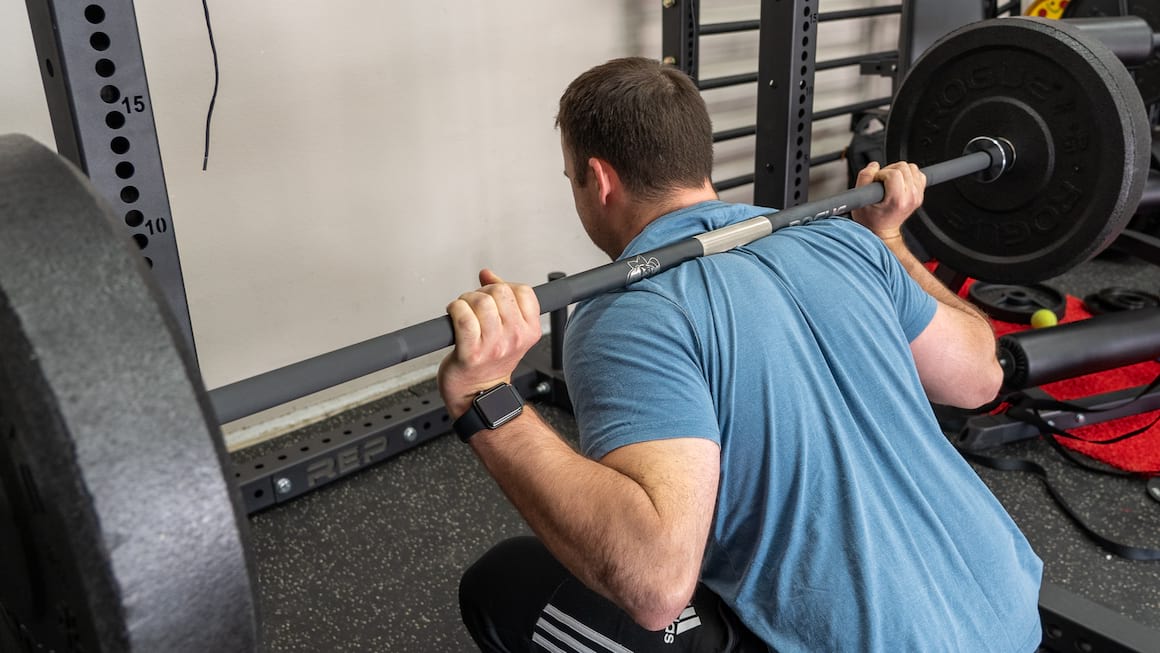
Shoes for Cross-Training
There are many cross-training shoes on the market and each brand is coming out with its own trademark design. Nike has been making cross-trainers for years, but other popular brands include Reebok, On, and Under Armor. I really like the Reebok Nano weave because they are super breathable and can be worn in any kind of workout.
Another personal favorite is the No Bull trainers due to their sleek style and variety of different colors. You can check out my best CrossFit shoes guide for other brands and styles that are equally as impressive. All these shoes share similar characteristics and designs and are some of the most stylish shoes you will see at the gym. Cross trainers are designed for, you guessed it, cross-training. They’re really popular among recreational athletes and group fitness enthusiasts.
These shoes are great for lifting weights and functional exercises like jumping, running, and dynamic movements. They are breathable, sturdy but slightly flexible, and supportive enough to be comfortable for long periods of time. If you are just starting out and need a solid pair of shoes that will work for all workouts, cross trainers are your best bet. They are also stylish enough to wear throughout the day and great for running errands and picking up the kids.
Here are a few things that set cross-trainers apart from other shoes on the market:
- They have minimal cushion: Because we want to wear cross-training shoes for lifting and functional workouts, it’s crucial to find a happy medium when it comes to cushioning. Too much cushion will give you less aware of the floor beneath you during weightlifting, but too little cushion won’t feel great when you land from a jump. Most cross trainers have enough cushion to be comfortable all day.
- They have a less flexible sole: Unlike running shoes, you do not want the sole of your cross-trainers, the bottom of the shoe that comes in contact with the ground, to be super flexible. You want to have a firmer sole for stability during lifts, but with a little bit of flexibility, you aren’t limited during other movements.
- They have cushioning and space in the forefoot: Cushioning in the forefoot, the front portion of the shoe that supports the toes and base of the foot, is important because a ton of movements like box jumps, double unders, and burpees require you to absorb your landing through the forefoot rather than in your heels. Extra room in the toe box will keep your toes comfortable and avoid rubbing, which can cause calluses and blisters.
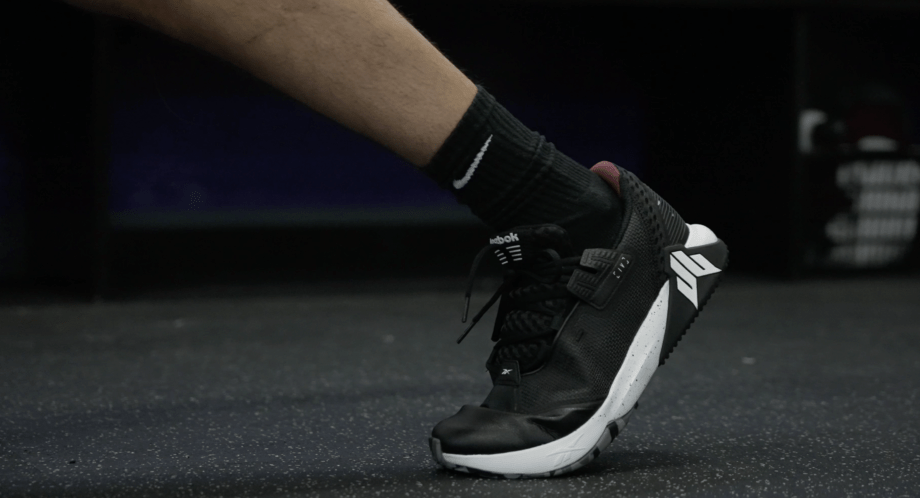
Shoes for CrossFit
CrossFit athletes take their shoes very seriously, and for a good reason like to have the best CrossFit shoes. The right shoes can protect your feet, give you more stability and help you move better. In CrossFit, you perform a variety of exercises, from weightlifting to rope climbing.
CrossFit shoes have some characteristics of weightlifting shoes with added features to accommodate all the other movements you’ll be performing. It’s important to find training shoes that you can not only squat and deadlift in but will hold up during dynamic movements, running, and quick transitions between exercises. When choosing a CrossFit shoe, you want to find shoes that have the following.
- Little to no Cushioning: CrossFit shoes are similar to weightlifting shoes in that they have little to no cushioning. Having good contact with the floor is essential as it helps with balance, load transfer, and stability during lifts.
- Rigid Soles: Choosing a shoe with a rigid flat sole will give you better contact with the floor during weight-based exercises and allow you to transfer the load through your feet properly. CrossFit shoes should be slightly more flexible than lifters as you still want to run and jump in them without too much limitation.
- Wide Toe Box: You want to be able to spread your toes out and ground your feet into the floor to distribute the weight through your entire foot during lifts. Having a wide toe box helps facilitate this, improving performance and balance.
- Thick Toe Cap: You will notice that many CrossFit shoes have a thick and protective toe cap, which is the piece of fabric over the toes that forms the front of the shoe. This helps during movements like burpees and will prevent injuries to the top of the foot and toenails. It also keeps your shoes looking new longer, so you aren’t replacing them after a few grueling workouts.
- Strong Heel Counter: The heel counter is a little plastic insert on the back of the heel that helps reinforce the heel cup and provides added stability to the shoe. This will not only help with balance but protects the shoe from unnecessary wear and tear.
- Rope Guard: This plastic piece on the interior arch is common in CrossFit shoes as it protects the foot during rope climbs. Rope climbs can generate a lot of friction and quickly wear down your shoes if they aren’t adequately protected. Rope guards not only provide added grip but will significantly increase the longevity of your shoes.
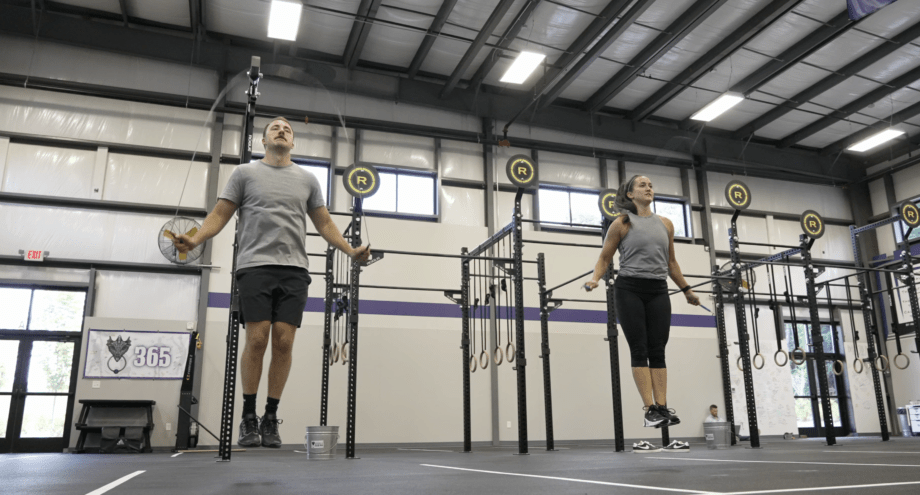
Shoes for Indoor Interval Running
Shoes for Indoor Interval RunningTreadmill running is similar to road running because it allows you to work on speed, form, and endurance on a more supportive, controlled surface. When it comes to indoor intervals you want to find a pair of shoes that are breathable, supportive, and fit well.
I know I sound like a broken record but the most important thing to consider when it comes to choosing a good pair of running shoes is finding a pair that fit right. A 2018 systematic review found that 63 to 72% of participants were wearing shoes that did not accommodate the width or length of their feet. That’s right, over half of us are wearing the wrong shoes, which can lead to calluses, blisters, and pressure spots, none of which make for a great workout.
Here are some other things to consider when it comes to finding a good pair of running shoes:
- They have a cushioned heel and forefoot: Running shoes are designed to absorb shock with every step. Unlike weightlifting shoes, it is really important to have a cushioned heel and forefoot to absorb the shock when your heel hits the ground as well as when you push off your toes to push yourself forward. It’s also important to find shoes that support the arch of your foot, which can prevent overuse injuries like plantar fasciitis. An injury like plantar fasciitis can stop you in your tracks (literally) and send excruciating pain in the heel and arch of the foot.
- They have traction on the bottom: You want shoes that have enough traction to grip the belt of the treadmill, so you aren’t slipping around. But be careful to not get shoes with so much traction that it interferes with your running. Look for shoes with more traction than your typical cross trainers, but avoid trail runners with lugged soles as they aren’t necessary on a treadmill.
- They have a flared heel: Most running shoes have a flared and cushioned heel, designed to give you more support as your heel hits the treadmill. This can help you avoid rolling in at the ankles and give you more support during running, although this may or may not be necessary depending on how your feet hit the ground when you run.
- They have some flexibility: It’s important to find flexible shoes that move with your foot as you run. This will help maintain the natural movement of the foot and decrease wear and tear on your joints. You never want to feel like you are stomping your feet down on the treadmill because this can cause some serious pain in the knees, hips, and low back.
- They’re lightweight: The lighter, the better when it comes to running shoes. Running in heavy shoes is unnecessary and can make your run feel much harder than it should be. You’ll want to choose snug and breathable shoes, so you don’t end up with blisters from sweaty feet.

Shoes for Indoor Cycling
If you are new to indoor cycling, you may be intimidated by all the specialized shoes that are on the market. Indoor cycling bikes are usually designed with clip-in pedals, and although you can use the bike with regular shoes, getting good clip-in shoes is an easy way to increase your performance. Some exercise bikes also have toe cages, which gives you some of the benefits of clip-ins with the convenience of wearing your regular training shoes.
If you are working the Assault bike into your workout, you can usually get away with wearing your regular training shoes, as long as they are comfortable and have enough grip to stay on the pedals.
Here are some tips for choosing the best shoes for your indoor cycling workout:
- Look for clip-in cycling shoes: If you are doing spin workouts and not just short sprints, clip-in shoes make a big difference. They allow you to generate force as you pull up on the pedal as well as when you push down. This will not only prevent fatigue but also increase your output.
- Opt for flat soles: The flat, slightly flexible sole of a cross trainer is perfect if you are jumping on an air bike for short sprints. They provide you with the maximum surface area on the pedal, and there is no need to change shoes between exercises.
- You’ll want shoes if you are using toe cages: If you are working spin intervals into your workout but want to wear your training shoes for the other exercises, toe cages on your pedals are similar to clip-ins as they allow you to generate more force on the up-drive but are easier to slip in and out of quickly between exercises.
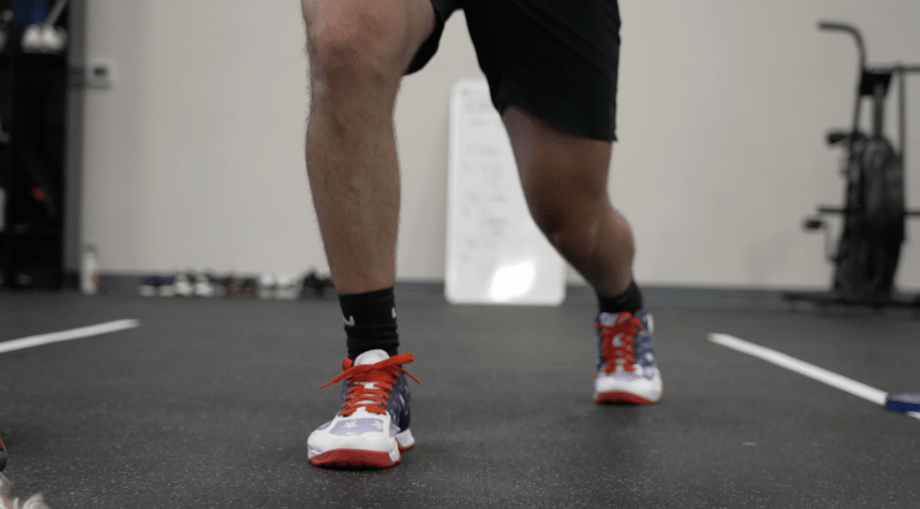
Shoes for Outdoor Trail Running
Believe it or not, sometimes I actually venture out of the garage gym and like to hit the trail. Of course, any good running shoes will work for an occasional trail run, but wearing shoes specifically for trail running will not only prevent injuries but can also make you feel invincible and agile on the trail.
RELATED: How to Choose Running Shoes
Like other types of training shoes, there are many brands and styles to choose from when it comes to outdoor trail running. Try to look beyond aesthetics and find shoes that not only fit your feet well but have the support and grip needed for a long outdoor run across uneven surfaces. It’s also nice to have a pair of shoes dedicated to the outdoors, so you aren’t dragging mud and dirt into the gym on your next workout.
Trail running shoes are unique in that they are lightweight but supportive, water-resistant, and have a deeper tread to give you better grip and traction when the ground gets slippery. When you’re looking for trail running shoes, here are some things to keep in mind:
- Proper Traction: You want to choose trail running shoes with deep grooves on the bottom, sometimes called lugged soles. This can be a game-changer on dry dirt, rocks, or muddy surfaces. The increased traction will prevent you from slipping and keep you from feeling every stone and pebble under your foot, ultimately leading to fewer injuries.
- Supportive Insoles: Like indoor running shoes, trail running shoes should be supportive and cushioned through the toe and heel. Trail runners are designed to prevent excessive foot rotation, so you don’t roll your ankle with every misstep. This will allow you to run longer with less pain and avoid overuse injuries.
- Foot Protection: Since you are more likely to encounter rugged terrain, finding shoes with toe guards and hidden plates will help prevent injury to the foot from rocks and hard surfaces. You also want the outside of the shoe to be sturdy and water-resistant to protect you from thorns, sticks, and muddy puddles. This not only makes for a more comfortable run but will significantly extend the life of your shoes.
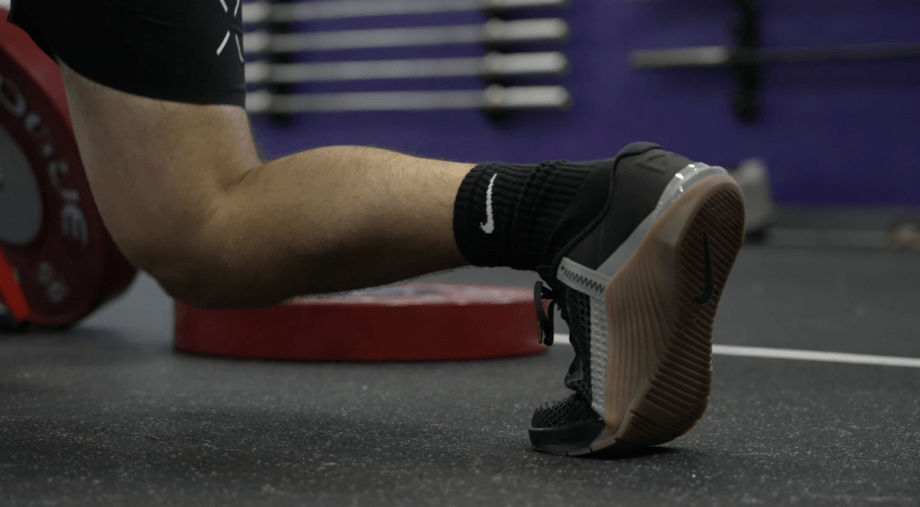
Final Takeaway
When it comes down to it, there are hundreds of different training shoes on the market, and each one has its own flair. I’m a huge fan of having a few different pairs to choose from, not only so you can choose shoes designed specifically for your workout of the day but cycling through a few pairs will help your shoes last longer and prevent excessive wear and tear. When you do find yourself finished with a pair of shoes, consider recycling or donating them to a good cause.
Whether you are lifting, running, spinning, or doing a CrossFit WOD, the most important thing is to find shoes that fit your feet well. I recommend visiting your local running store and consulting with an expert to determine what kind of support will most benefit the shape and structure of your foot. This is really important for those with any foot issues like plantar fasciitis, bunions, or heel spurs, or for those who are training for an event such as a marathon or CrossFit competition.
Feeling good in the gym can start with the right pair of shoes. No one wants to be caught wearing the wrong runners during a hard-core lifting session. Not only will the right shoes make you look trendy, but your body will thank you in the long run.
References
Alferdaws, F. F., & Ramadan, M. Z. (2020). Effects of Lifting Method, Safety Shoe Type, and Lifting Frequency on Maximum Acceptable Weight of Lift, Physiological Responses, and Safety Shoes Discomfort Rating. International journal of environmental research and public health, 17(9), 3012. https://doi.org/10.3390/ijerph17093012
Buldt, A. K., & Menz, H. B. (2018). Incorrectly fitted footwear, foot pain and foot disorders: a systematic search and narrative review of the literature. Journal of foot and ankle research, 11, 43. https://doi.org/10.1186/s13047-018-0284-z
Legg HS, Glaister M, Cleather DJ, Goodwin JE. The effect of weightlifting shoes on the kinetics and kinematics of the back squat. J Sports Sci. 2017 Mar;35(5):508-515. doi: 10.1080/02640414.2016.1175652. Epub 2016 Apr 20. PMID: 27096286.
McKenzie, D. C., Clement, D. B., & Taunton, J. E. (1985). Running shoes, orthotics, and injuries. Sports medicine (Auckland, N.Z.), 2(5), 334–347. https://doi.org/10.2165/00007256-198502050-00003


